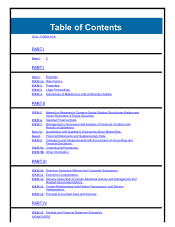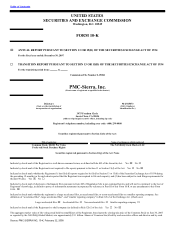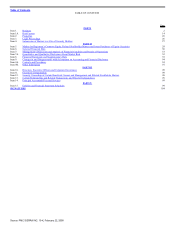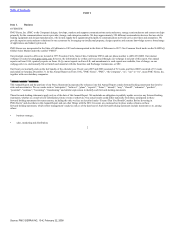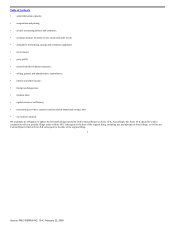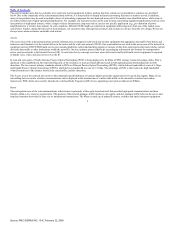Adaptec 2005 Annual Report Download - page 12
Download and view the complete annual report
Please find page 12 of the 2005 Adaptec annual report below. You can navigate through the pages in the report by either clicking on the pages listed below, or by using the keyword search tool below to find specific information within the annual report.
Table of Contents
For high-capacity data communication over fiber optic systems, the standard used is called SONET (for Synchronous Optical Network) in North America and
parts of Asia, and called SDH (for Synchronous Digital Hierarchy) in the rest of the world. In addition to using SONET/SDH to increase the bandwidth, or
capacity, of their networks, many service providers have also deployed equipment that uses an optical technology called dense wave division
multiplexing. Rather than transmitting a single light signal over an optical fiber, dense wave division multiplexing allows many different light signals (each of a
different wavelength) to be transmitted simultaneously. By deploying this technique at higher transmission rates, carriers can move more signals across
transmission lines.
Our products and solutions are used in metro equipment such as multi-service switches and edge routers that gather and process signals in different protocols, and
then transmit them to the next destination as quickly and efficiently as possible. The next-generation equipment in the metro portion of the network that can
handle different data protocols is often referred to as multi-service provisioning platforms that facilitate the efficient transmission of internet protocol (IP) packets
over optical fiber.
Enterprise Storage
Institutions and businesses connect to their data storage either directly or indirectly, the latter using network-attached systems (NAS) or storage area networks
(SAN). Fibre Channel protocol, which is the standard for the transfer of information between computers and storage devices (hard disk drives), is the dominant
standard in the storage area of the market, with the market transitioning from fibre channel operating at 2 Gbps to speeds of 4 and 8 Gbps. In addition, there is a
shift occurring in storage networking from parallel to serial interconnections and two standards have emerged which are Serial-Attached SCSI (better known as
SAS) and Serial ATA (SATA), both of which are being deployed in storage networks today. The SAS and SATA devices are operating at 3 Gbps today and
devices are being introduced at 6 Gbps in this segment of the market. Another standard is called Internet Protocol SCSI (or iSCSI), but this has not yet gained
broad acceptance and deployment.
Our products and solutions in this area enable the high-speed interconnection of the servers, switches and storage devices that comprise these systems so that
large quantities of data can be stored, managed and moved securely. Our focus in this area is developing interconnect devices and controllers for Fibre Channel,
SAS and SATA. We are also developing next-generation controllers for the server-attached storage systems.
Enterprise Networking
The enterprise area of the network includes equipment that is deployed primarily in the office for data communications and other local area network applications.
Equipment such as switches and routers are used by both large and small businesses and enterprises to manage their data on an inter-office and intra-office
basis. This market also includes office network equipment such as laser printers or multi-function printers, where we sell our standalone microprocessors and
integrated SoCs or system-on-chip designs.
6
Source: PMC SIERRA INC, 10-K, February 22, 2008


